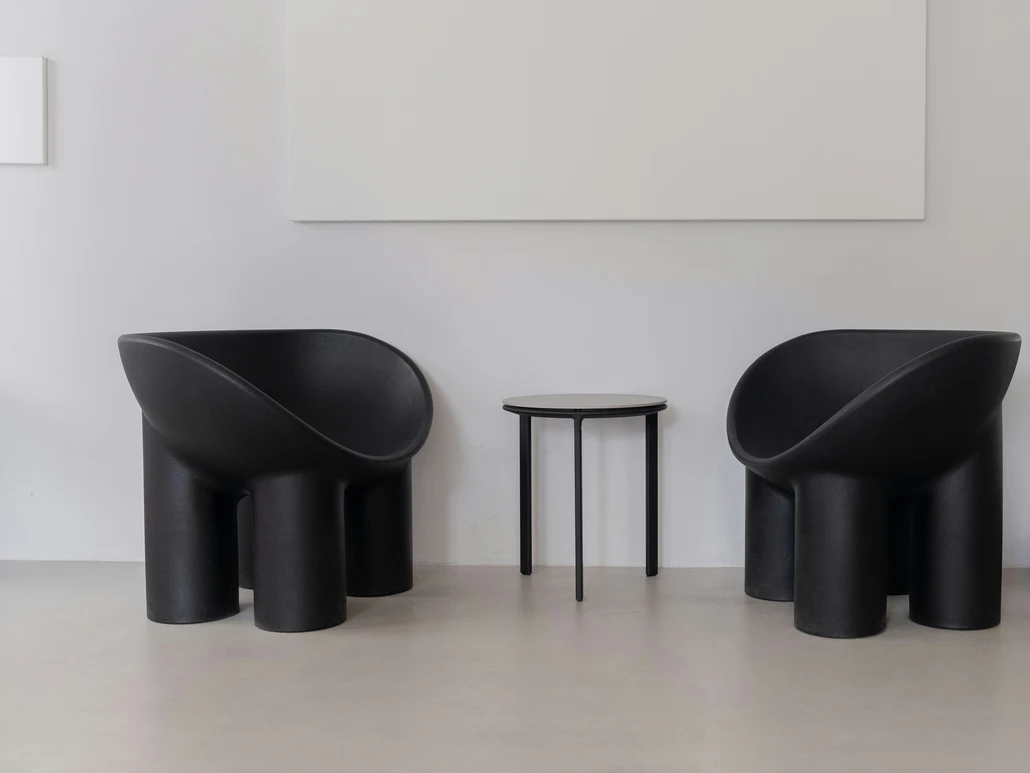Parenting changes everything—including how you decorate your home. Suddenly, sharp edges, unanchored furniture, open outlets, and stylish but risky design elements become hazards. But here’s the challenge: how do you embrace child-proofing without ruining your interior design?
It’s a question thousands of design-conscious parents face. You want a home that’s safe for your kids, but you don’t want to give up on beautiful interiors that reflect your personal style. The good news is: child-proofing without ruining your interior design is 100% possible with the right approach.
This guide offers practical, stylish, and creative ways to protect your little ones while keeping your home looking exactly how you love it. Whether you’re expecting your first baby or navigating toddler chaos, you’ll find everything you need to blend safety with sophistication—without compromise.

1. Why Child-Proofing Gets a Bad Rap (and Why It Should Not)
Many parents associate child-proofing with foam bumpers, clunky plastic gates, and bulky furniture pads. Unfortunately, most mainstream solutions focus on function but forget form. But the truth is, child-proofing without ruining your interior design is not only doable—it can elevate your aesthetic.
Design trends now align with minimalist safety solutions, blending seamlessly into modern, rustic, and even luxury interiors. Instead of seeing child-proofing as a style sacrifice, think of it as a thoughtful upgrade. When child-proofing without ruining your interior design is done right, it adds elegance, order, and peace of mind.
2. Start With a Room-by-Room Safety Map
One of the first steps to successful child-proofing without ruining your interior design is knowing where risks are highest. Walk through each room at your child’s eye level and note anything that could become a hazard.
Common red flags include:
- Sharp table corners
- Unstable bookcases
- Unsecured rugs
- Uncovered electrical outlets
- Loose cords and curtains
- Slippery floor finishes
- Decor within reach (candles, vases, art, etc.)
By identifying trouble areas ahead of time, you can plan child-friendly design solutions that look intentional—not like afterthoughts.
3. Stylish Corner Protectors and Edge Guards
Sharp-edged furniture is one of the most common risks in a family home. But covering your elegant coffee table in chunky foam doesn’t scream good taste.
Thankfully, there are discreet solutions. Silicone corner protectors now come in clear finishes or wood tones to match your decor. For marble, glass, or high-end wood, look for L-shape guards with an adhesive-free grip that won’t damage the surface.
This approach keeps safety invisible while maintaining aesthetic harmony—an ideal example of child-proofing without ruining your interior design.
4. Anchoring Furniture Without Compromising Style
Tall furniture poses tipping hazards, especially as toddlers begin climbing. The goal is to secure without creating an eyesore.
Use hidden brackets behind dressers, bookshelves, and consoles to anchor them to the wall. Opt for wall anchors that screw into studs and offer heavy-duty strength without bulk. You can also blend anchors behind wall-mounted art or custom panels for added visual appeal.
Tip: Invest in lower, wider furniture with closed drawers—more stable by design and safer by nature—an ideal example of child-proofing without ruining your interior design done right.
5. Hidden Locks That Work With Your Cabinets
Traditional baby locks might protect your child—but they often scream plastic and bulk. Fortunately, magnetic and adhesive interior locks are changing the game.
Interior cabinet locks attach inside your cabinetry and stay completely invisible when closed. With a magnetic key, adults can open doors easily while little hands stay out. These hidden mechanisms are one of the best hacks for child-proofing without ruining your interior design, especially in kitchens and bathrooms where you want a clean, uninterrupted look.
6. Replace, Don’t Just Cover Hazardous Decor
Some decor elements pose unavoidable risks—like glass vases, open-frame lanterns, low shelves with candles, or ceramics placed on the floor.
Rather than covering them awkwardly, consider replacing them temporarily. Swap breakables for softer textures like woven baskets, felt storage bins, or child-safe plant pots in matte finishes. Choose artwork with acrylic fronts instead of glass, and use Velcro to secure frames to the wall.
This swap doesn’t just prevent accidents. It aligns with the broader principle of child-proofing without ruining your interior design by making safety part of your decor story.
7. Embrace Rounded, Low-Profile Furniture
Designers increasingly favor curved silhouettes and minimalist profiles—which also happen to be kid-friendly.
Rounded ottomans, barrel chairs, arched coffee tables, and soft poufs eliminate hard corners and promote open, flowy layouts. Upholstered furniture in durable yet stylish fabrics (like performance velvet or wipeable faux leather) adds warmth while standing up to daily toddler wear.
This approach proves that child-proofing without ruining your interior design isn’t just about add-ons—it can start with intentional furniture choices.
8. Swap Rugs for Soft, Washable, Non-Slip Alternatives
Rugs bring warmth and texture to your space, but many pose slip risks, hide allergens, or stain easily. For a kid-safe upgrade, try flat-weave, machine-washable rugs with built-in rubber backing.

Stylish options from modern rug brands now offer muted tones, geometric prints, and boho-inspired layers that blend effortlessly with upscale interiors.
You get all the aesthetic benefits of a statement rug—and all the child-proofing perks in one smart move—an example of child-proofing without ruining your interior design done right.
9. Upgrade Your Window Treatments With Child Safety in Mind
Window cords are a major strangulation hazard—and a non-negotiable for child-proofing. But you don’t have to settle for ugly blinds or out-of-place safety hooks.
Choose cordless Roman shades, motorized blinds, or curtains with pull wands instead of strings. Floor-to-ceiling panels in linen or textured cotton add elegance while keeping windows kid-friendly. Mounting curtains higher and wider than the frame gives the illusion of taller ceilings and keeps the fabric out of crawling reach.
This is a prime example of child-proofing without ruining your interior design—functional upgrades that improve safety and aesthetics simultaneously.
10. Use Safety Gates That Blend In—Not Stand Out
Forget the flimsy plastic gates of the past. Today’s market offers sleek, well-crafted baby gates in wood, metal, or neutral finishes that complement your home’s style.
Opt for pressure-mounted gates with simple lines and minimal branding. Use finishes that match your banisters, flooring, or cabinetry. For extra discretion, try retractable mesh gates that disappear entirely when not in use.
Choosing a gate that feels like a design element rather than a safety add-on is essential to child-proofing without ruining your interior design.
11. Create Designated Zones With Subtle Barriers
Not every part of your home has to be 100% child-proofed. Instead, you can designate kid-safe zones where your child can explore freely while maintaining stylish adult spaces elsewhere.
Use bookcases as subtle room dividers, arrange furniture to create visual boundaries, or install soft, stylish play mats that define areas without clashing with your decor. By creating clear boundaries, you protect your child while protecting your design.
12. Pick Finishes That Are Durable and Beautiful
Child-proofing goes beyond physical safety—it’s also about durability. Kids bring spills, bumps, and unpredictable messes. Choosing finishes that hold up over time while staying elegant is a cornerstone of child-proofing without ruining your interior design.
Look for satin-finish paints that are easy to clean but don’t look glossy. Choose tables with water-resistant wood or laminate finishes. For upholstery, performance fabrics that repel stains and can handle wear keep your space looking fresh long after the baby years.
13. Toy Storage That Doesn’t Scream Playroom
Toys are everywhere when you have kids—but that doesn’t mean your living room has to look like a daycare center. Incorporate concealed storage that blends into your decor.
Opt for stylish baskets, ottomans with storage compartments, or low cabinets with sliding doors. Use matching labels or color-coordinated bins to give a uniform look. The goal is to make cleanup quick without disrupting your aesthetic.
Keeping toys contained in elegant storage is a crucial part of child-proofing without ruining your interior design.
14. Choose Child-Safe Decor That Grows With Your Family
Instead of cluttering your home with baby-specific gear you’ll need to remove in a year, choose decor items and furniture that evolve with your child.
Convertible cribs, adjustable high chairs, floor cushions, and multifunctional storage grow with your family and blend beautifully with a thoughtful interior. Prioritize pieces with longevity, quality, and flexibility—true pillars of child-friendly design that lasts.
15. Lighting That’s Safe, Stylish, and Practical
Table lamps can topple, cords can tangle, and floor lamps can be pulled down by curious hands. That doesn’t mean you have to compromise on ambiance or beauty.

Secure your lighting with wall sconces, pendant lights, or LED strip lighting. Cordless table lamps and battery-operated lights reduce hazards while still letting you set the perfect mood. Choose matte finishes, sculptural shapes, and dimmable controls to keep your lighting both safe and stylish.
Conclusion: Yes, You Can Have Both
Creating a home that’s both stylish and safe is not about choosing one over the other. It’s about merging intention with practicality. With the right design mindset, you can fully embrace child-proofing without ruining your interior design. In fact, it becomes an opportunity to elevate your space into something more thoughtful, adaptable, and refined.
The most beautiful homes are those that work for the people living in them—including the smallest ones. So don’t stress about every foam pad or plastic latch. Focus on the design details that protect your kids while preserving your home’s personality—a prime example of child-proofing without ruining your interior design.
Because style and safety are not enemies. They’re partners in creating a home that truly supports your life—beautifully. Check out the Secure Living category for more blogs like these!







